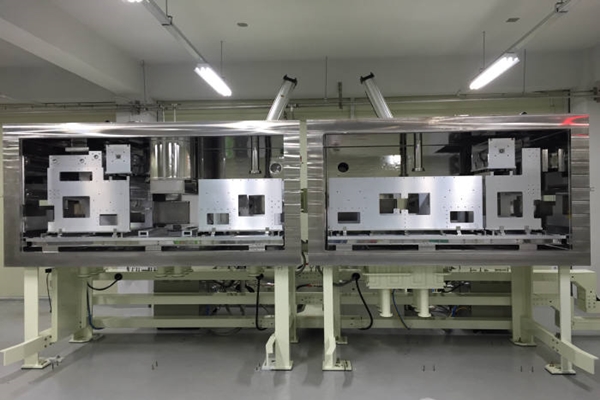A small South Korean company has developed a deposition system that can directly deposit organic and inorganic material onto film and plastic material and mass-produce flexible OLEDs.
GJM (CEO Lee Moon-yong) made an announcement on the 17th that it has succeeded in developing roll-to-roll deposition system for OLEDs by working with a team led by Professor Kwon Shin of Korea Institute of Machinery & Materials’ Printed Electronics Laboratory.
This system can repeatedly produce products by pass flexible roll-type substrates through upper part of source of deposition and depositing organic and inorganic material.
It can repeatedly inject substrates and reduce production time and cost of OLED panels greatly by carrying out alignment of substrates and masks in real-time.
It is able to deposit up to 300mm, which is the greatest depth in South Korea.
Although cluster-type production process is currently being used in South Korea to produce flexible OLEDs, a technology that can replace this process is needed urgently due to low efficiency of this process.
Cluster-type production process goes through a complicated production process of depositing polymer films onto glass substrates and separating them from glass substrates after process is over. It has disadvantages of having long time of production process and expensive production cost since it needs to put and take out glass substrates out of a chamber besides of organic film coating and align substrates and masks very precisely.

Researches on roll-to-roll continuous deposition technology are taking place mainly from large research institutes and businesses such as Germany’s Fraunhofer, Netherland’s Holst Centre, Japan’s KONICA MINOLTA and others. In South Korea, this research is taking place in a small size from universities and research institutes.
If GJM’s deposition system is used, amount of production can be improved by 1.5 times compared to previous process and price of panels can be reduced. Cost of production facility can also be reduced greatly through formation of continuous chambers. Fields where this system can be used are also diverse. It can be widely used for mass-production of OLEDs that need flexible function such as display, lighting, wearable devices and others that are expected to have more demands in the future.
GJM is predicting that if production of flexible OLED panels that use roll-to-roll deposition method becomes norm, not only this will reduce production cost of OLED panels but it will create new industries and markets that are based on production of devices that have variety of designs and use films and plastic material.
OLED roll-to-roll deposition system had received positive responses by recently being exhibited printed electronics exhibition called ‘LOPED 2016’, which is world’s biggest printed electronics exhibition, in Munich. Currently many South Korean and foreign businesses are discussing about developing applicable products.
GM is planning to introduce its technical skills and products to other countries by continuously exhibiting its products at foreign exhibitions, foreign roadshows and others.
GJM is also planning to develop precise roll-to-roll deposition technology that is able to produce high-resolution radiation pattern by using ultra-fine six degrees of freedom mask align technology.
“Through continuous research and development, we will become a hidden champion in flexible OLED field as well as OLED lighting.” said President Lee Moon-yong with enthusiasm.
Staff Reporter Shin, Sunmi | smshin@etnews.com